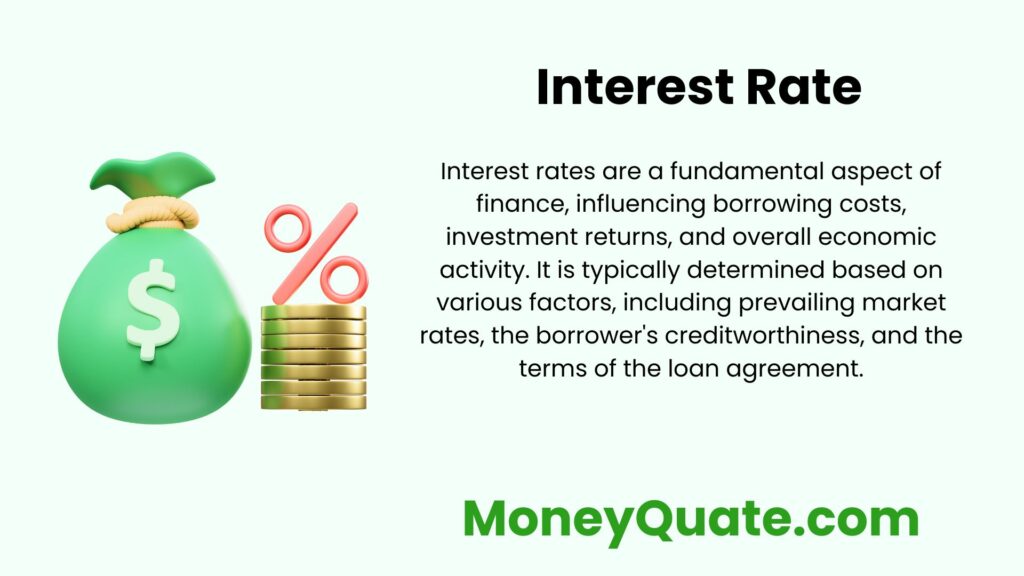Contents
Understanding Interest Rates

Meaning and Types
Interest rates, expressed as a percentage, represent the price of borrowing money or the compensation for lending capital.
Various types include nominal, real, and effective interest rates, each serving different purposes in financial analysis.
Nominal Interest Rate
The nominal interest rate is the stated rate before adjusting for inflation.
It provides a straightforward measure of borrowing or lending costs but does not account for changes in purchasing power over time.
Real Interest Rate
Adjusted for inflation, the real interest rate reflects the true return or cost of borrowing.
By subtracting the inflation rate from the nominal rate, it offers a more accurate measure of purchasing power and investment returns.
Effective Interest Rate
The effective interest rate considers compounding over a specific period, providing a comprehensive view of the actual cost or return over time.
It accounts for the impact of compounding frequency on the total interest earned or paid.
Factors Influencing Interest Rates
Economic Conditions
Macroeconomic factors such as inflation, economic growth, and unemployment rates influence interest rates.
Central banks adjust policy rates to manage inflation and stimulate or cool economic activity.
Supply and Demand
Interest rates are influenced by the demand for credit and the supply of funds from lenders.
Higher demand for loans or a limited supply of capital may lead to higher interest rates.
Credit Risk
Lenders assess the creditworthiness of borrowers and adjust rates accordingly.
Riskier borrowers face higher interest rates to compensate for the increased likelihood of default.
Monetary Policy
Central banks use interest rates as a monetary policy tool to achieve economic objectives.
Lowering rates stimulates borrowing and spending, while raising rates curbs inflation and encourages saving.
Impact of Interest Rates
Borrowing and Lending
Interest rates directly affect the cost of borrowing for individuals and businesses.
Lower rates incentivize borrowing for investments or consumption, while higher rates discourage borrowing.
Investment Returns
Interest rates influence returns on investments such as bonds, savings accounts, and certificates of deposit.
Higher rates may boost returns, but also increase borrowing costs and impact asset valuations.
Economic Activity
Fluctuations in interest rates impact consumer spending, business investment, and housing markets.
Changes in rates affect the affordability of loans and mortgages, influencing overall economic growth.
Management of Interest Rate Risk
Hedging Strategies
Individuals and businesses use financial instruments such as interest rate swaps, options, and futures to hedge against interest rate fluctuations.
These strategies help mitigate risk and protect against adverse movements in interest rates.
Asset Allocation
Diversifying investments across asset classes with varying sensitivities to interest rates can help manage risk.
Balancing fixed-income securities, equities, and alternative investments can enhance portfolio resilience.
Policy Response
Central banks adjust monetary policy tools, including interest rates, to manage interest rate risk and stabilize financial markets during economic downturns.
Forward guidance and unconventional measures may be employed to communicate policy intentions and support economic recovery.
Conclusion
Interest rates are multifaceted financial variables with significant implications for individuals, businesses, financial markets, and economies. By comprehensively understanding the types, determinants, and impacts of interest rates, stakeholders can make informed decisions, manage risk effectively, and navigate the dynamic landscape of finance and economics.
1 thought on “Interest Rates Exposed: Impact on Borrowing, Investing, and Economic Growth”